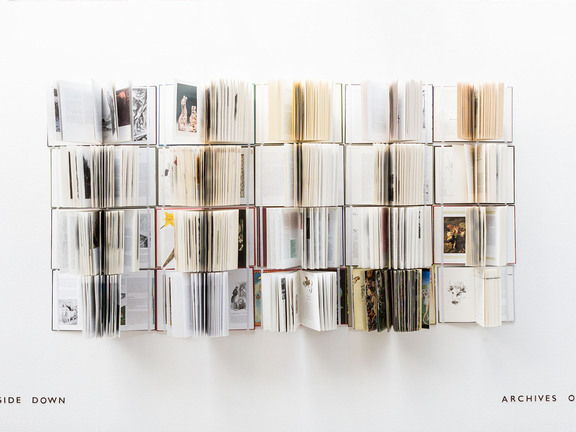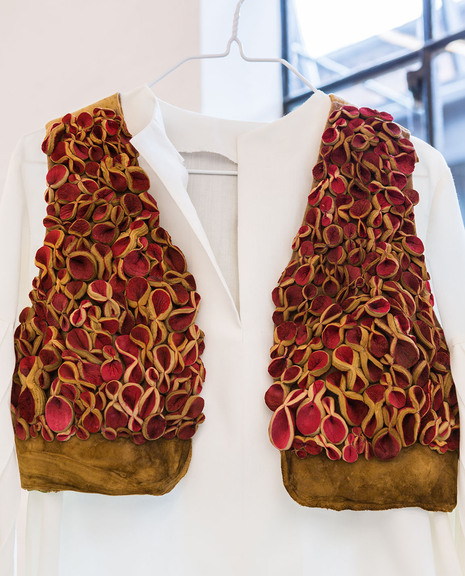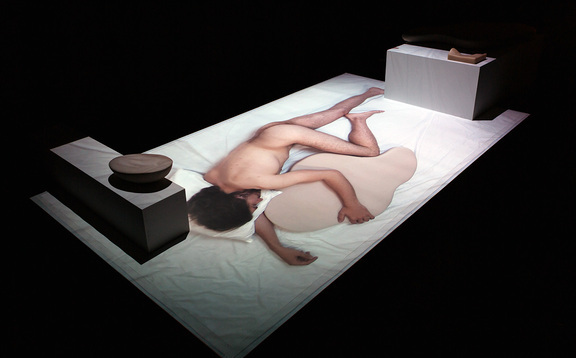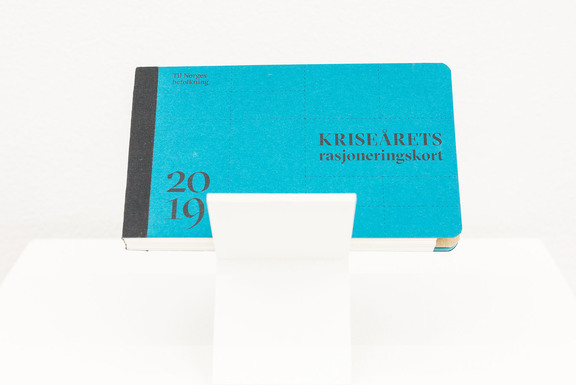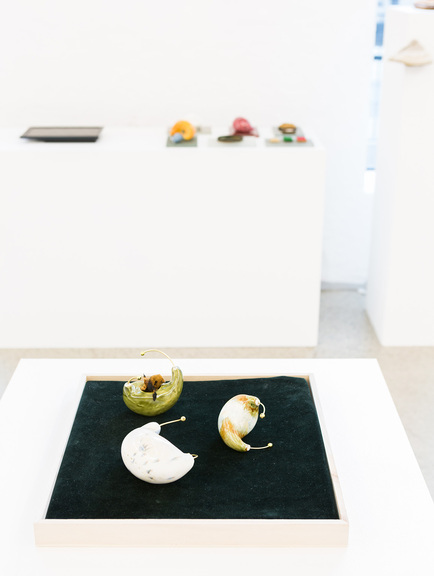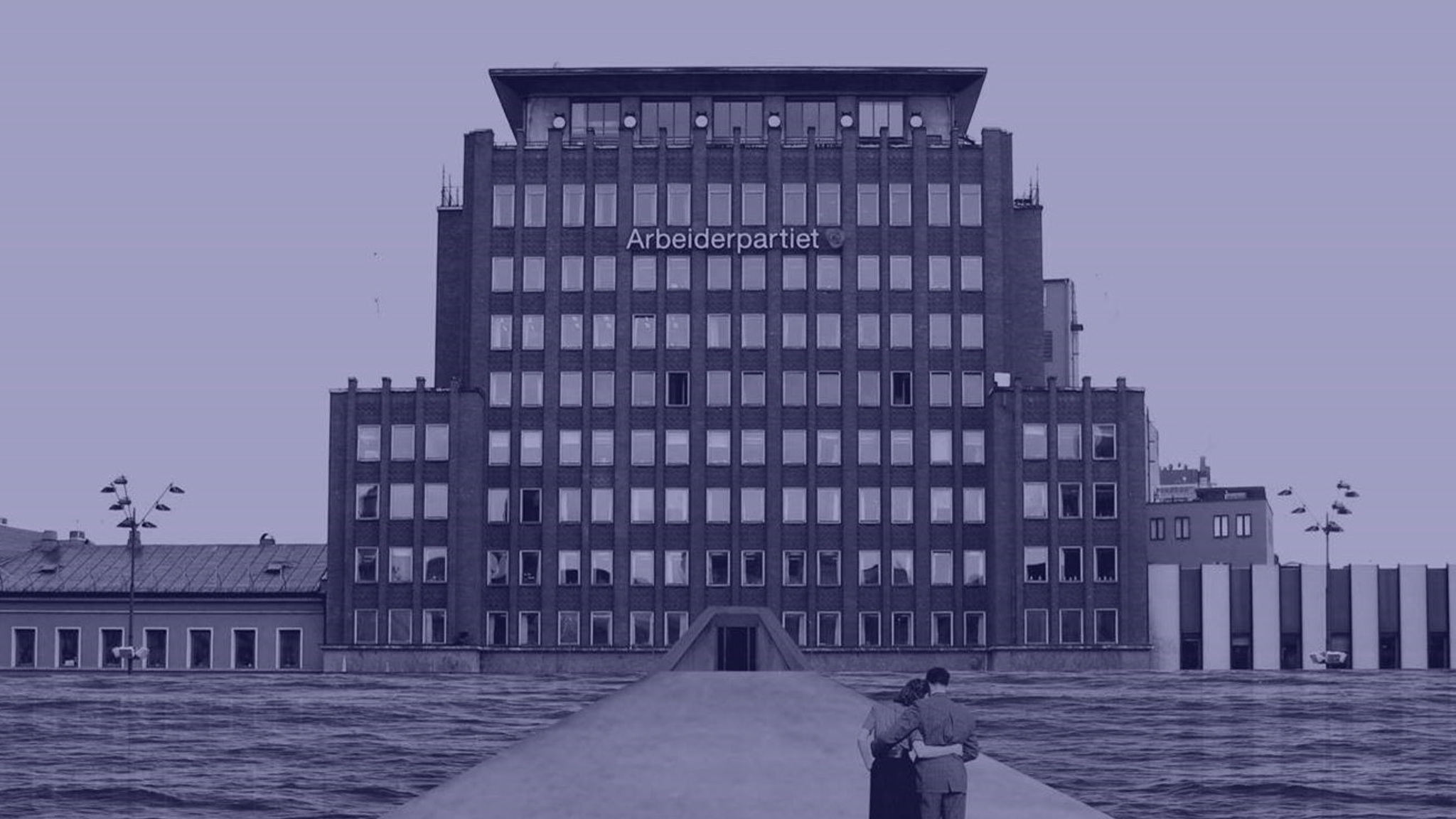

Master’s in design
The Master’s programme in design is a two-year professionally oriented specialisation in one of the design department’s subject areas:
- graphic design and illustration
- clothing design and costume design
- interior architecture and furniture design
Work in the area of specialisation constitutes the main part of the course. Another integral component of the programme is the study of theory and methodology relevant to all the above specialisations.
The Master’s programme in design is experimental and research oriented. The training aims to educate independent, creative and critically-minded practitioners who are equipped to meet society’s needs for relevant and innovative design solutions, forms of expression and ways of working.
Rooted in a humanistic tradition of art education, the programme emphasises solutions that contribute to diversity and quality in society on both the local and global levels.
The Master’s programme in design is project-based and emphasises professional practice and critical reflection. It is committed to transparent and experimental design processes that integrate with the department’s design-relevant research and development work.
See Designavgang: 2023, 2022, 2021, 2020, 2019, 2018, 2017, 2016, 2015, 2014, 2013, 2012, 2011
Graphic design and illustration
The specialisation in graphic design and illustration explores and discusses the possibilities and potential of this artistic field. The specialisation employs an experimental approach, with a focus on practical projects and subject-relevant reflection. Students are expected to show a high degree of academic independence. They are given time to do research using both their own and standard academic approaches, and receive feedback from the staff and fellow students. The specialisation encourages perspectives that challenge the discipline and have the potential to reshape the discourse around this field of specialisation.
This specialisation runs project sites that presents students’ work and projects.
Clothing design and costume design
The specialisation in clothing and costume design provides knowledge about the design of garments that meet the needs of various end users, from one-off theatre costumes to more widely used articles, considered in the social and cultural contexts. In the specialisation, students generally focus on either clothing design or costume design. Each area offers scope for specialised studies on a variety of themes that require expert supervision.
Interior architecture and furniture design
This specialisation uses an artistic approach to the design of interior spaces and furniture. The student’s own expertise, experience and intuition form the basis for the development of a personal, experimental and critical approach. The specialisation emphasises independent project development, critical thinking, empathy, social awareness and a conceptual mind-set that seeks to serve and challenge society in new ways. Within the framework of individual projects, the student can explore boundary-breaking and interdisciplinary approaches by cooperating with students from the Academy’s various design, art and performing arts disciplines. The Academy has a full-scale Space Lab, advanced digital facilities and material-based workshops.
This specialisation runs project sites that presents students’ work and projects:
Curriculum
Brief Programme Description
The study programme ‘Master of Design’ stands within an exploratory and critical tradition and a visual arts context. Students have opportunities for in-depth practical specialization, exploration and experimentation. They specialize in their own practice and subject area at the same time as their practice is challenged through encounters with other fields and approaches. The programme emphasizes open and experimental design processes and offers practical training and design competence.
The programme is studio-and-workshop based, at the same time as emphasizing theory, method and reflection. The notion of ‘the student as a creating subject’ is central. A key goal is that after completing the master programme – involving creating form, artistic practice and exploratory approaches – the student will be equipped to contribute new insight into aesthetic and sociocultural conditions, thus helping to develop the field of design in the sociocultural context.
There are three areas of specialization: graphic design and illustration, interior architecture and furniture design, and fashion and costume design. Each student will choose one area in which to specialize. In addition to specialization courses, master students in design participate in courses that cut across the design/art disciplines; these are studio-based, theoretical and method-related courses.
The ‘Master of Design’ is a full-time study programme. Those receiving the degree will have great insight, knowledge and expertise in their area of specialization as well as greater understanding of other areas in the fields of art and design. Degree holders will be able to engage in professional practice or go on to pursue 3 artistic research. The programme culminates in a large self-chosen project in the student’s chosen area of specialization.
Admission Requirements
Anyone with a bachelor’s degree in performing arts, visual art, architecture or design is eligible to seek enrolment in the study programme.
The target group for the study programme consists of applicants who want to develop expertise in one of the specified areas of specialization, and who want to situate their practice in wider disciplinary and sociocultural contexts.
The master programme builds on a three-year bachelor’s degree in design (180 credits), or an equivalent education that includes design studies of at least 120 credits relevant to the area of specialization for which the applicant applies. Applicants with less than 120 credits in relevant bachelor-level subjects can also apply for admission if they document that their practical experience gives them an equivalent scope and level relative to the specialization for which they apply.
The programme is open to students who only master English at the time of application. Languages of instruction and teaching are Norwegian and English. The study programme is designed for students who only master English, such that all courses and electives can be completed without the student mastering Norwegian.
The application consists of a completely filled-out application form. The following should accompanythe application:
- Curriculum vitae
- A letter explaining the applicant’s motivation for applying
- A portfolio containing works relevant to the chosen area of specialization
Applicants will be evaluated based on their:
- previous education and experience
- professional level and potential for development
- motivation for enrolling in the study programme Applicants may be summoned to an interview.
Learning Outcomes
On completion of the study programme, students will:
- have advanced knowledge about their own design practice and professional field.
- have in-depth knowledge in, and experience with, an artistic, research-based designpractice.
- have good knowledge of, and done critical reflection on, their own practice and that ofothers.
- be able to define, plan and carry out large and complex design projects, both in terms of content and execution.
- be able to carry out advanced design experiments.
- be able to discuss their own professional practice at a high level.
- have deep understanding of the relation between the creation of form and aesthetic, social and societal conditions.
- be able to lead their own projects, involve professionals from other disciplines, and facilitate their own further learning and development.
- be able to share insight from their own field and specialization with specialist groups and the general public.
Structure and Progression
The Master of Design programme is constructed through interaction between a common core of courses (taken by all students in the programme), courses in the chosen area of specialization, the student’s independent work, and development of his or her field of interest.
The programme’s scope and the workload for each course are described in terms of credits. 60 credits are equivalent to one year of full-time study. One credit is equivalent to about 25 to 30 hours of actual work for a student. Actual work hours include teacher-directed activities, lectures, written assignments, seminars, independent study and so forth. Some courses may involve a lot of teacher-directed activity, while others require students to work independently or in groups.
In the first year, each student’s own practice is emphasized and situated in field-specific and sociocultural contexts. At the same time, the student’s practice is challenged through encountering other traditions in the subject area and fields in art and design. Design practice is linked to theory, methods and sociocultural contexts. In the second year, the student’s practice is challenged through theme-based projects and experimentation. The programme culminates in a larger independent work: the theoretical and practical ‘Master Project’. In the fourth semester, the student works on a self-chosen practical project in consultation with an advisor. The project ends with an open oral presentation, as part of the master’s degree exhibition.
Exchange
KHiO facilitates student exchanges with other educational institutions. Students in the Master of Design study programme can do an exchange as part of their first year of study, second semester (Spring). Updated information about the application process and KHiO’s exchange agreements can be found at www.khio.no
These exchange agreements are valid for master’s in design:
Teaching and Learning Methods
Teaching in the study programme is based on artistic knowledge and knowledge accrued through research and experience. It is closely linked with disciplinary development in the Department of Design.
The programme is full-time and has a three-part structure: teacher-directed activities, supervision and independent work. Forms of working can consist of courses, studio work, lectures, independent study and work, workshops, excursions, group-critique sessions, presentations and exhibitions, assignments and projects (individual and group-based).
The programme requires a high degree of independence and willingness to spend relatively long periods of time doing in-depth study of subject-area-related research questions.
Coursework requirements for the study programme include:
- completion and submission of all assignments by the scheduled deadlines
- participation in instruction and activities that are defined as mandatory in the description of each individual course
Students who do not meet work requirements may be assigned additional tasks to meet the requirements. This may for example be to participate in extra instruction or solve an alternative assignment that caters for the learning outcome in the course. If the student has been absent a lot or has been absent during mandatory activities that may not be replaced by an alternative assignment, the student must take the course again. This must be done as self-study the following semester and the student is not entitled to extra supervision/teaching.
Further information about coursework requirements is included in the individual course descriptions. There may be opportunities to participate in voluntary, self-financed fieldtrips in Norway and abroad during the study. Regulations on both truancy and authorized leaves of absence are specified in the document ‘Regulations for Study Programmes at Oslo National Academy of the Arts’ (Forskrift om studiene ved Kunsthøgskolen i Oslo).
Assessment
Coursework requirements must be met in order for the student to receive a final assessment in each course. The student’s work in each course is assessed in relation to the learning outcomes and assessment criteria set for the given course. The assessment is made by the teacher with course responsibility and may also be done in collaboration with internal subject teachers and / or external guest teachers.
A student must pass all first-year courses before he or she is allowed to start the second year. All courses are graded on a pass/fail basis. For more information about assessment, see the course descriptions. Further provisions pertaining to assessment and exams are included in ‘Regulations on Study Programmes at Oslo National Academy of the Arts'.
Quality Assurance
Oslo National Academy of the Arts has systems to ensure and further develop the quality of all parts of the education. Students are important contributors to this work, in part, through their participation in student evaluations and the annual Learning Environment Survey.
Course Structure
| Course code | Course name | ECTS Credits |
|---|---|---|
| DE505 | Point of view | 5 |
| DE511 | Studio 1: Specialization Interior Architecture and Furniture Design | 15 |
| DE512 | Studio 1: Specialization Graphic Design and Illustration | 15 |
| DE513 | Studio 1: Specialization Clothing Design and Costume Design | 15 |
| DE521 | Studio 2: Specialization Interior Architecture and Furniture Design | 15 |
| DE522 | Studio 2: Specialization Graphic Design and Illustration | 15 |
| DE523 | Studio 2: Specialization Fashion and Costume Design | 15 |
| DE524 | Method 1: Context | 5 |
| DE525 | Strategies | 5 |
| DE545 | Theory 2: Theory Development | 5 |
| DE504 | Theory 1: Theory in Design Practice | 5 |
| DE506 | The Public | 5 |
| Course code | Course name | ECTS Credits |
|---|---|---|
| DE531 | Studio 3: Specialization Interior Architecture and Furniture Design | 10 |
| DE532 | Studio 3: Specialization Graphic Design and Illustration | 10 |
| DE533 | Studio 3: Specialization Clothing Design and Costume Design | 10 |
| DE534 | Method 2: Tools | 5 |
| DE535 | Experiment | 5 |
| DE541 | Master Project: Specialization Interior Architecture and Furniture Design | 30 |
| DE542 | Master Project: Specialization Graphic Design and Illustration | 30 |
| DE543 | Master Project: Specialization Clothing Design and Costume Design | 30 |
| DE551 | Theory 3: Synthesis | 10 |
Admissions
The application deadline was 01 February 2024. New application deadlines are announced early in the Autumn Semester.
About the Design department
The Design department offers both Master’s and Bachelor’s programmes in graphic design, illustration, clothing design, costume design, interior architecture and furniture design.
The department has excellent workshop facilities, and its small classes are highly conducive to training independently-minded practitioners who do not simply regurgitate the academic discourse, but rather challenge it in ways that develop their discipline and society as a whole. This is an important role for a public institution in an educational landscape where the number of design courses is constantly growing.
The Design department started life as Statens håndverks- og industriskole (Oslo National College of Art and Design) (SHKS), founded in 1818. The department is constantly seeking to develop the legacy and craft traditions of the SHKS, and regards its various workshop facilities as central to this effort.
